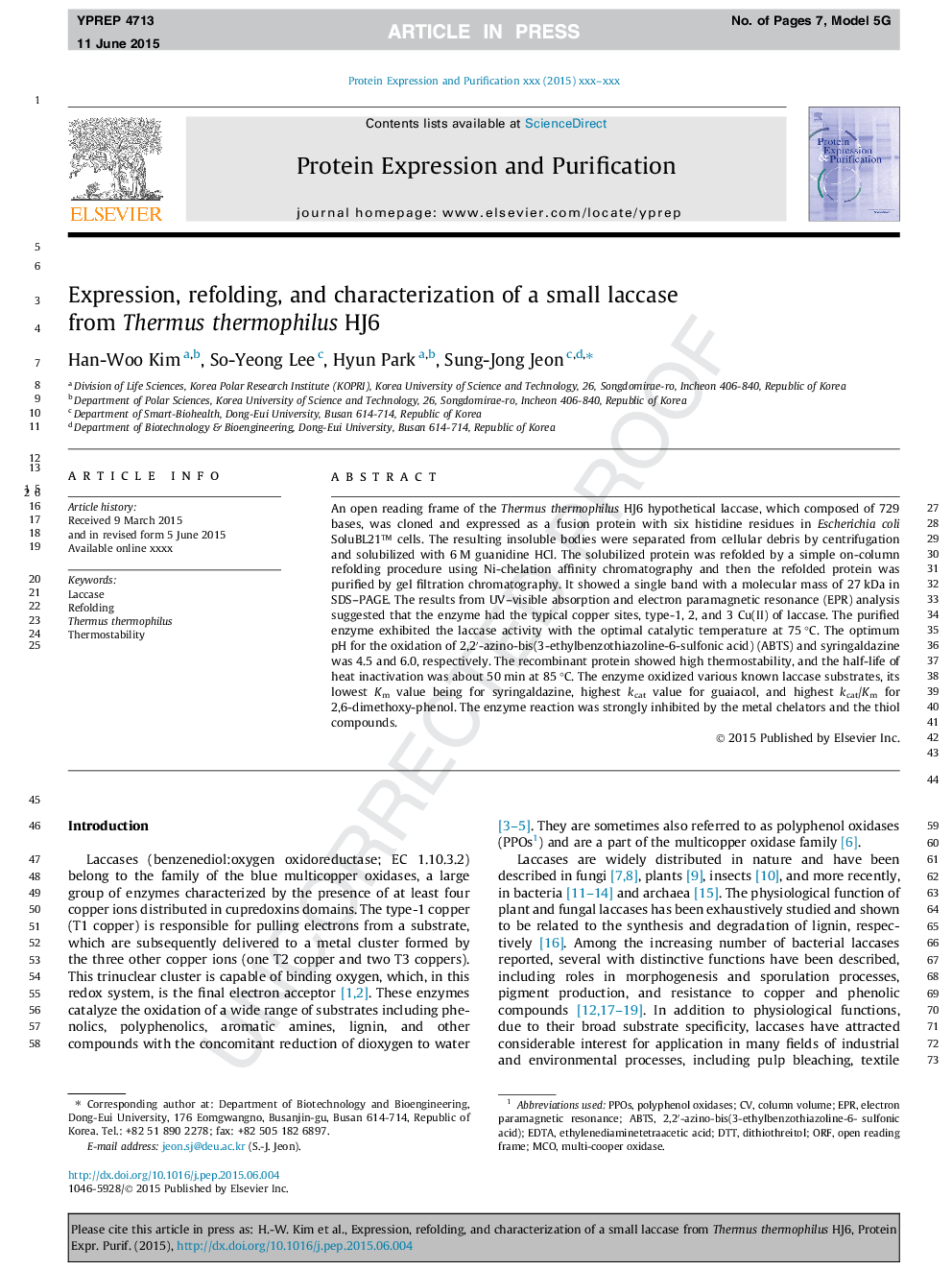| Article ID | Journal | Published Year | Pages | File Type |
|---|---|---|---|---|
| 8360040 | Protein Expression and Purification | 2015 | 7 Pages |
Abstract
An open reading frame of the Thermus thermophilus HJ6 hypothetical laccase, which composed of 729 bases, was cloned and expressed as a fusion protein with six histidine residues in Escherichia coli SoluBL21⢠cells. The resulting insoluble bodies were separated from cellular debris by centrifugation and solubilized with 6 M guanidine HCl. The solubilized protein was refolded by a simple on-column refolding procedure using Ni-chelation affinity chromatography and then the refolded protein was purified by gel filtration chromatography. It showed a single band with a molecular mass of 27 kDa in SDS-PAGE. The results from UV-visible absorption and electron paramagnetic resonance (EPR) analysis suggested that the enzyme had the typical copper sites, type-1, 2, and 3 Cu(II) of laccase. The purified enzyme exhibited the laccase activity with the optimal catalytic temperature at 75 °C. The optimum pH for the oxidation of 2,2â²-azino-bis(3-ethylbenzothiazoline-6-sulfonic acid) (ABTS) and syringaldazine was 4.5 and 6.0, respectively. The recombinant protein showed high thermostability, and the half-life of heat inactivation was about 50 min at 85 °C. The enzyme oxidized various known laccase substrates, its lowest Km value being for syringaldazine, highest kcat value for guaiacol, and highest kcat/Km for 2,6-dimethoxy-phenol. The enzyme reaction was strongly inhibited by the metal chelators and the thiol compounds.
Related Topics
Life Sciences
Biochemistry, Genetics and Molecular Biology
Biochemistry
Authors
Han-Woo Kim, So-Yeong Lee, Hyun Park, Sung-Jong Jeon,
